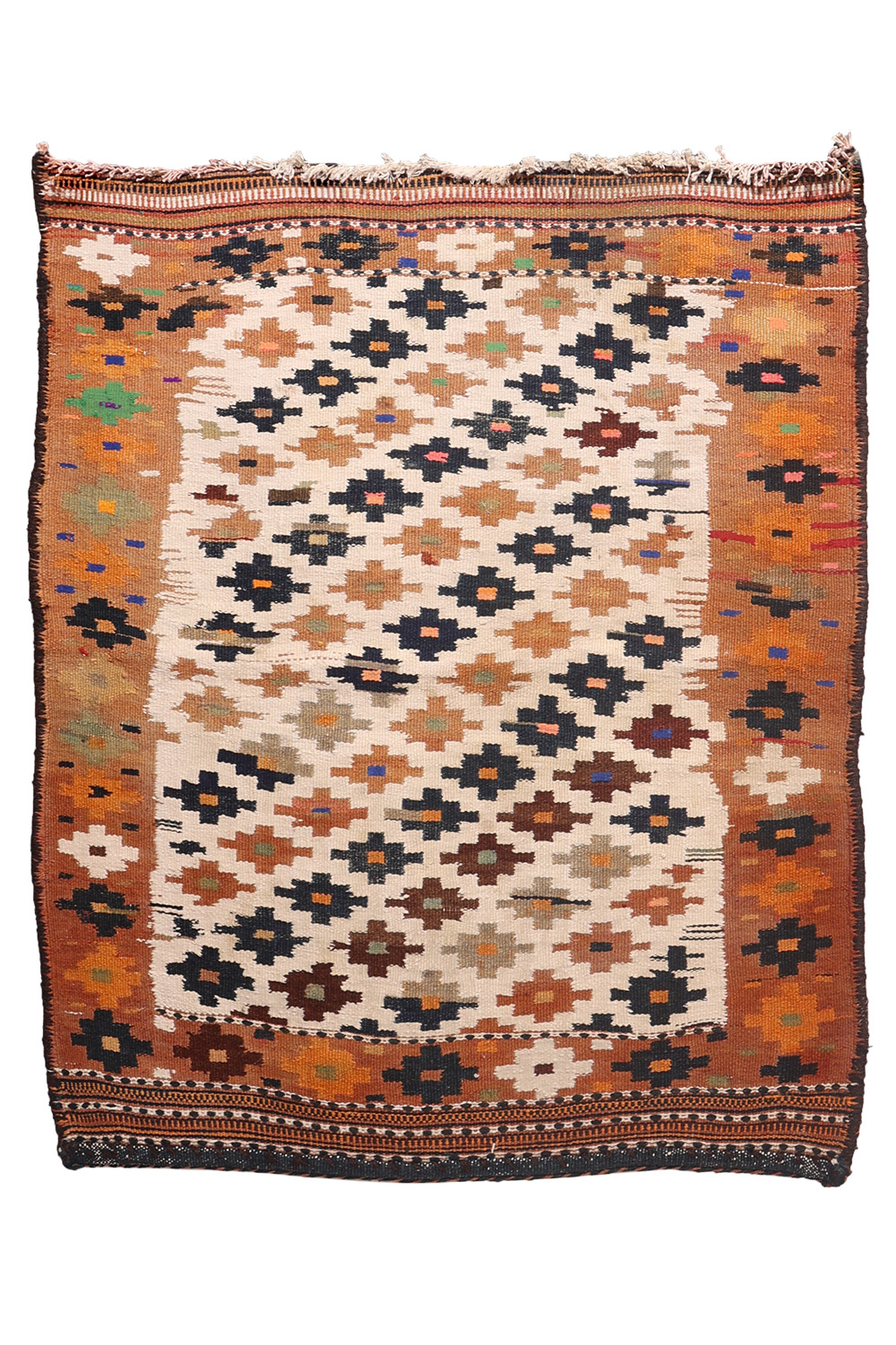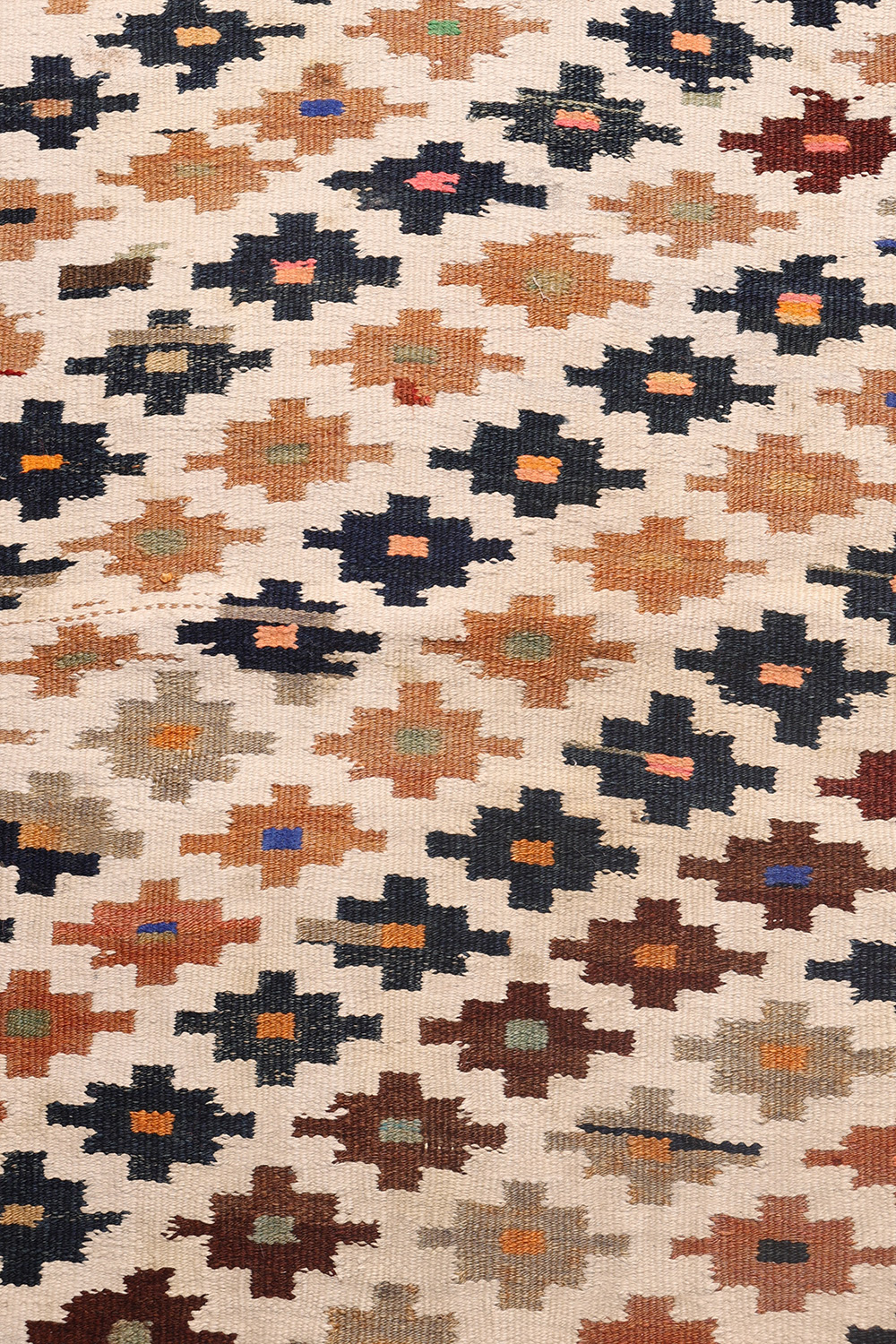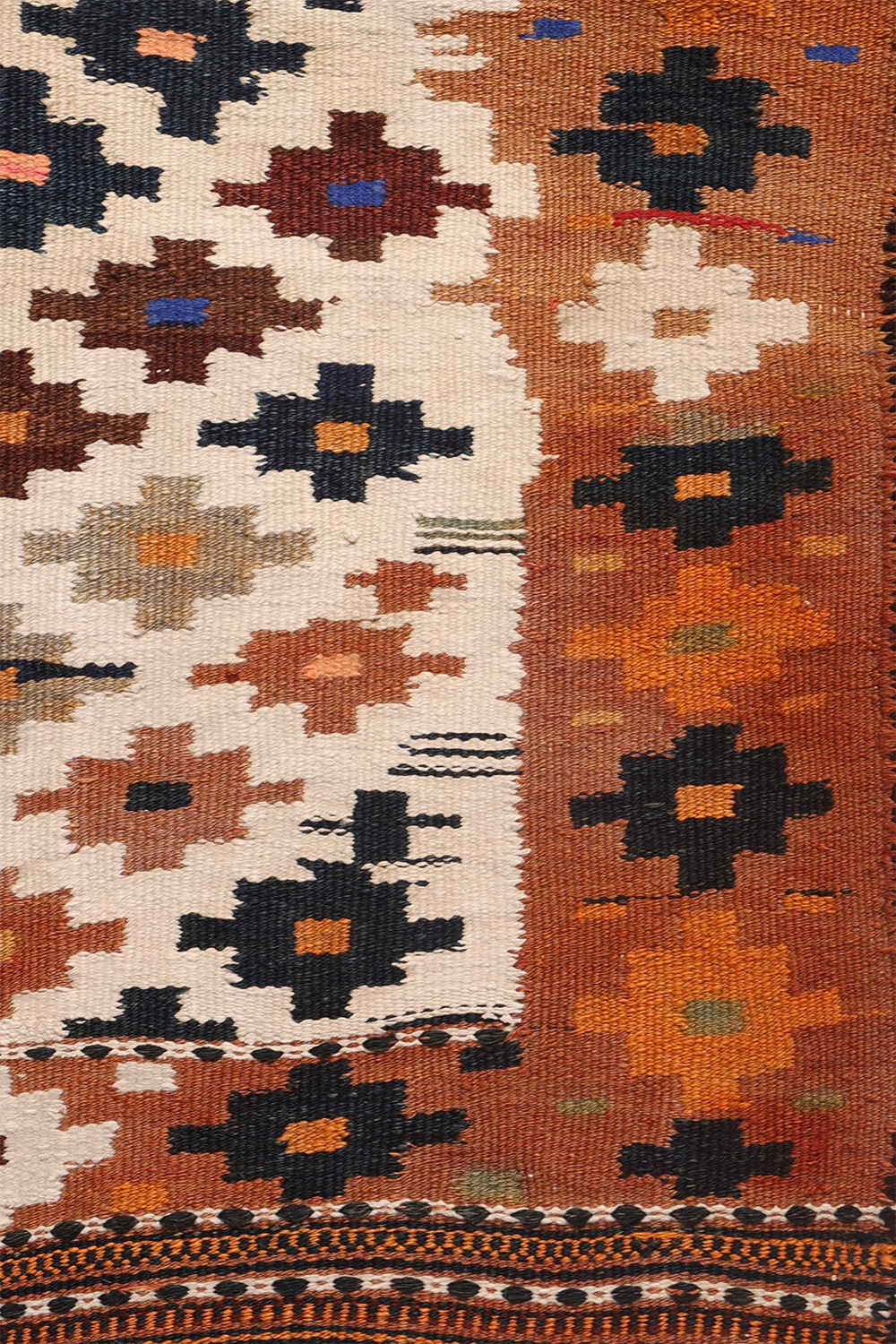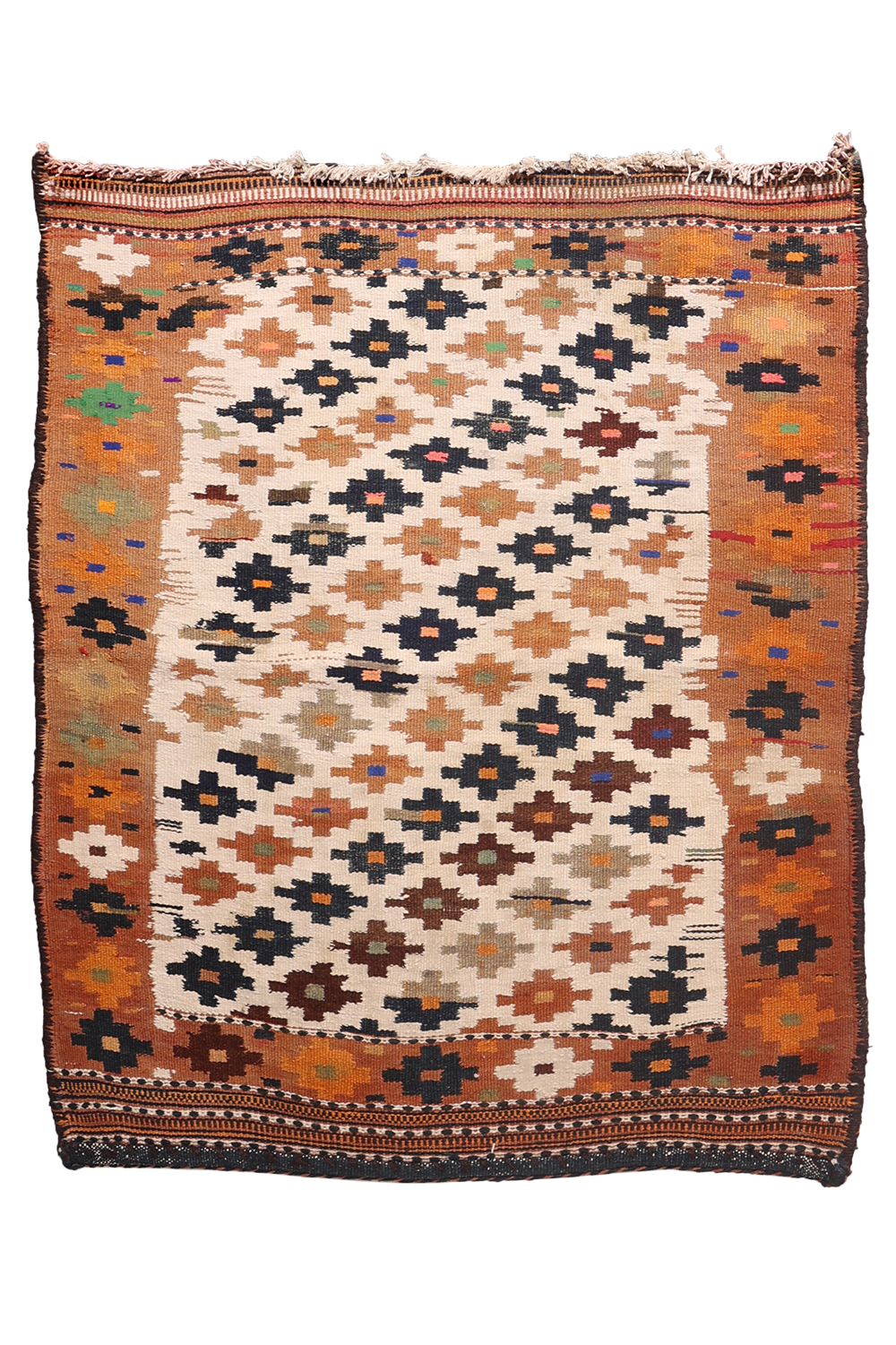This playful 1960s Bakhtiari sofreh kilim, traditionally used for making and storing bread, is full of asymmetries, irregularities, and color variations throughout both the field and the border. At times, the border encroaches into the field, while at other times, the field spills over into the border. The colors in the motifs also exhibit a delightful randomness, adding to the charm of this unique piece. Some staining in the white areas.
Material: 100% hand-spun sheep wool and cotton (white areas)
Size: 103×88 cms
Origin: Bakhtiari tribe, Irán
Date of weaving 1960s
Sofrehs take their name from the Farsi (Persian) word for cloth and are used for several functions connected with preparing and eating food. Eating cloths are normally referred to simply as sofrehs and vary enormously in size-from small, rectangular mats for personal use to extremelly long, narrow runners for communal eating. They are woven in several standard techniques, including alternating bands of kilim and pile rug, and produced by a number of nomadic and tribal weavers in Iran, Afghanistan, Central Asia and to a lesser degree, elsewhere.
The Bakhtiari (also spelled Bakhtiyari; Persian: بختیاری) are a Lur tribe from Iran. They speak the Bakhtiari dialect of the Luri language.
Bakhtiaris primarily inhabit Chaharmahal and Bakhtiari and eastern Khuzestan, Lorestan, Bushehr, and Isfahan provinces.
A small percentage of Bakhtiari are still nomadic pastoralists, migrating between summer quarters and winter quarters. Numerical estimates of their total population vary widely.
Due to their luck of escaping danger throughout their history, they called themselves bakhtiyar (“fortunate”).
:
1 in stock
| Weight | 2.8 kg |
|---|




